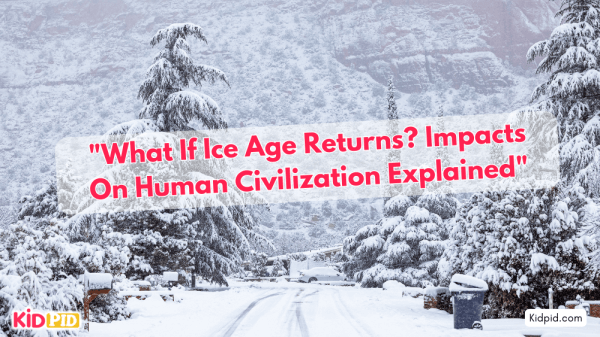Have you ever wondered what it would be like if the Ice Age came back? The Ice Age was a time when huge glaciers covered much of the Earth. Let’s find out what could happen to humans and our world if that chilly time returned!
- What Was the Ice Age: The Ice Age was a period thousands of years ago when large parts of the Earth were covered in ice and snow.
- Impact on Earth: If the Ice Age returned, temperatures would drop, and glaciers would expand, covering cities and farmland.
Many places we know today would be buried under ice! - Effects on Humans: People would have to find new ways to survive in the cold, like building warmer homes and finding different food sources. Farming would become very difficult because of the ice, leading to food shortages.
- Changes in Wildlife: Many animals would adapt to the cold, while others might struggle to survive. Ecosystems would change, with some species thriving and others disappearing.
- Why It Matters: Understanding the Ice Age helps us learn about climate change and how it affects our planet today.
“Impacts on Human Civilization If the Ice Age Returns”
Related MCQ’S
1. What is an Ice Age?
A. A period of extreme heat across the planet
B. A time when global temperatures drop well below freezing
C. A condition where only the poles are cold
D. A period of constant rainfall
Answer: B. A time when global temperatures drop well below freezing
Explanation: During an Ice Age, the Earth experiences freezing temperatures, causing large sheets of ice (glaciers) to cover significant parts of the planet.
2. Why isn’t the Earth entirely covered in ice right now, even though we are technically in an Ice Age?
A. The Earth’s core has become hotter
B. We are in a warm interglacial period
C. Greenhouse gases have completely melted the ice
D. Ice Age cycles have ended permanently
Answer: B. We are in a warm interglacial period
Explanation: Interglacial periods are warmer phases within an Ice Age when glaciers melt, and the Earth’s climate is more temperate.
3. What could happen if the Earth enters another Ice Age today?
A. Human civilization would thrive due to colder temperatures
B. Many areas would become icy wastelands, unsuitable for living
C. Oceans would rise dramatically
D. Plants and animals would flourish more than ever
Answer: B. Many areas would become icy wastelands, unsuitable for living
Explanation: Thick ice sheets and extreme cold would make regions uninhabitable, reduce agricultural land, and disrupt ecosystems.
4. How do human activities affect the possibility of another Ice Age?
A. They make Ice Ages more likely
B. They prevent Ice Ages by increasing global warming
C. They have no effect on Ice Age cycles
D. They accelerate Ice Age cycles
Answer: B. They prevent Ice Ages by increasing global warming
Explanation: The burning of fossil fuels and release of greenhouse gases contribute to global warming, reducing the likelihood of entering another Ice Age.
5. What would likely happen to sea levels during an Ice Age?
A. Sea levels would rise due to melting ice
B. Sea levels would drop significantly
C. Sea levels would remain the same
D. New oceans would form
Answer: B. Sea levels would drop significantly
Explanation: During an Ice Age, large amounts of water are locked in ice sheets, causing sea levels to fall dramatically.
6. What were early humans during the Ice Age known as?
A. Homo erectus
B. Homo sapiens
C. Neanderthals
D. Cro-Magnons
Answer: Both B & C. Homo sapiens and Neanderthals
Explanation: Both Homo sapiens and Neanderthals lived during the Ice Age, adapting with tools, fire, and shelters.
You may like these:
When will the next ice age happen?
The next ice age is delayed due to human-induced climate change, with warming trends potentially postponing it for tens of thousands of years.
How long will human impacts last?
Human impacts, such as carbon emissions and plastic pollution, may persist for millennia, leaving long-lasting marks on Earth’s atmosphere, ecosystems, and geology.
Did cavemen live in caves?
Cavemen occasionally lived in caves, but they also used other shelters. Caves often preserved their remains, creating the term “cavemen” in modern understanding.
How do glaciers form?
Glaciers form when snow accumulates over time, compressing into dense ice layers. Cold temperatures and pressure help transform snow into massive, slow-moving ice bodies.
